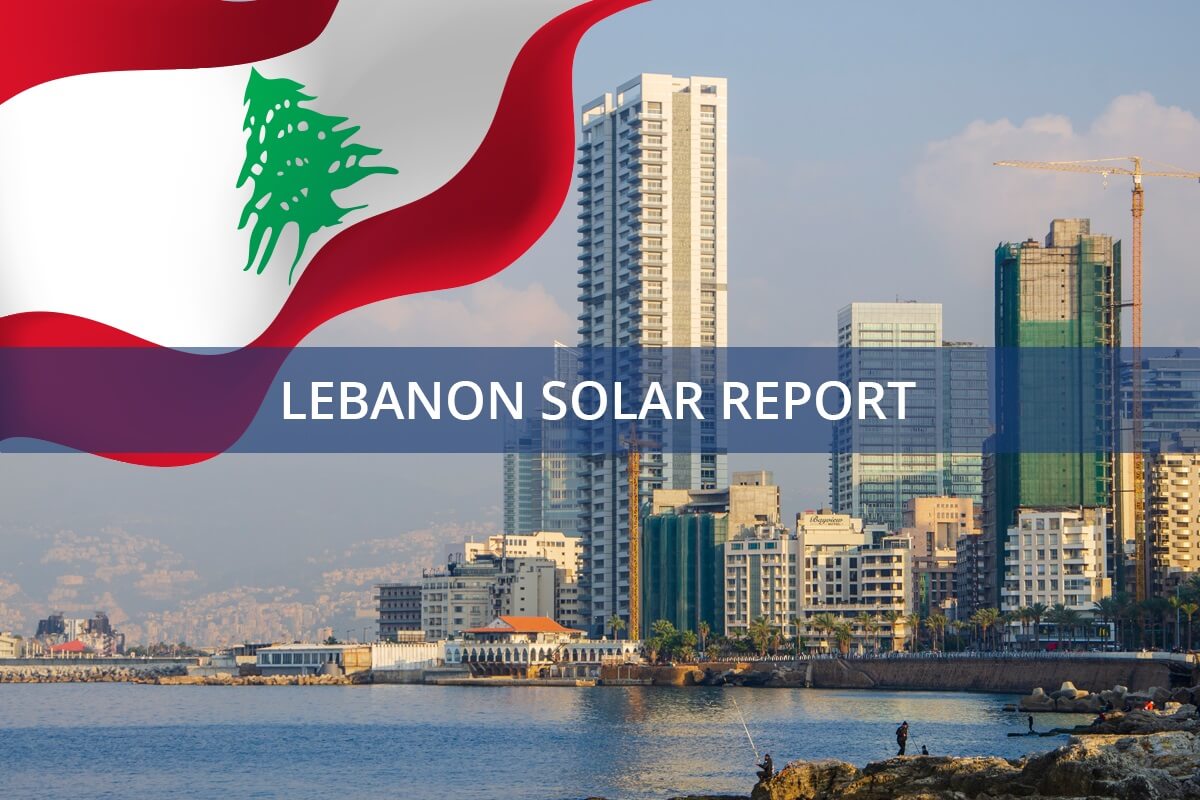An entrepreneur considering a new venture in Lebanon’s growing solar market faces a paradox. The very problem he aims to solve for others—unreliable electricity—is one of the most significant operational hurdles for his own factory.
With the national grid providing as little as one to three hours of power per day, a standard manufacturing plan is simply not viable. This reality places a critical question at the center of any serious business plan: How do you secure a stable, 24/7 power supply for a sensitive manufacturing line in an environment of systemic energy scarcity?
The solution isn’t a simple backup generator but a carefully engineered, independent power infrastructure. This guide outlines the specific energy challenges in Lebanon and details the robust hybrid solutions required for a solar module factory to operate efficiently and profitably.
The Lebanese Energy Paradox: High Demand, Unreliable Supply
The energy situation in Lebanon presents both a market opportunity and an operational challenge. Decades of underinvestment have left the national grid unable to meet demand, resulting in extensive daily power cuts. Consequently, the country relies heavily on a decentralized network of private diesel generators to fill the gap.
For businesses, this situation creates several fundamental problems:
-
Extreme Operational Costs: Diesel fuel is expensive and subject to volatile pricing, making energy a large and unpredictable operational expenditure.
-
Logistical Burdens: Securing a consistent supply of diesel can be a complex logistical task, diverting focus from core business activities.
-
Environmental Concerns: The heavy reliance on diesel generators contributes significantly to air pollution and carbon emissions.
While many businesses and homes are turning to solar power, the energy requirements for industrial manufacturing are of a different magnitude and demand a much higher standard of reliability.
Why Standard Power Solutions Fall Short for Manufacturing
A solar module factory is a sophisticated industrial facility. The machinery involved, from cell stringers to laminators, requires not just a constant supply of electricity but also high power quality—a stable voltage and frequency, free from the surges, sags, and fluctuations common with basic generator power.
Ready to make big Profits?
The solar Industry is Booming
WE HELP NEWCOMERS to the solar industry start their own solar module production line. Customers can make BIG PROFITS by selling modules and finding investors, without wasting money and time on things they don't need!
Relying solely on a standard diesel generator poses a direct risk to the manufacturing equipment and the final product. Voltage instability can damage sensitive electronic components, leading to costly repairs and downtime. More critically, it can compromise the precision of the manufacturing process itself. A laminator operating with inconsistent power may fail to cure modules correctly, resulting in product defects and wasted materials.
For a business where quality control is paramount, an unstable power source introduces an unacceptable level of operational risk. The success of the entire venture depends on guaranteeing a pristine electrical supply.

The Hybrid System: A Reliable Power Strategy for Lebanese Factories
The most effective and resilient solution for a manufacturing facility in Lebanon is a hybrid power system. It’s not a single product but an integrated infrastructure designed to provide uninterrupted, high-quality electricity by combining several key components.
Core Components of a Factory-Grade Hybrid System
-
Solar PV Array: This is the primary power source. Typically installed on the factory roof or adjacent land, the solar array generates electricity during daylight hours to directly power operations and charge the energy storage system.
-
Diesel Generator: The generator acts as a reliable backup, engaging automatically at night, on days with low solar irradiation, or to handle unexpected peak loads.
-
Battery Energy Storage System (BESS): As the heart of the system, the BESS serves two critical functions. First, it stores excess energy generated by the solar panels for use when the sun is not shining. Second, and most importantly, it acts as a power conditioner. All electricity, whether from the solar array or the generator, is channeled through the BESS and its inverters, ensuring the machinery receives a perfectly stable, clean electrical signal.
-
Intelligent Power Management System: This is the brain of the operation. It monitors the factory’s energy demand, the state of charge of the batteries, and solar generation in real-time. It automatically decides when to draw power from the solar array, when to use the batteries, and when to start the generator, optimizing for cost-efficiency and reliability.

This integrated approach directly mitigates the risks of grid instability. It drastically reduces reliance on expensive diesel, ensures 24/7 operational continuity, and protects the significant investment in manufacturing equipment.
Planning Your Factory’s Energy Infrastructure
A reliable power strategy must be a foundational element of a solar module manufacturing business plan, not an afterthought. Based on experience from J.v.G. turnkey projects, underestimating energy requirements is a common and costly planning error.
A structured approach involves several key steps:
-
Conduct a Thorough Load Analysis: Before any equipment is sized, a detailed analysis of the factory’s projected energy consumption is essential. This involves calculating the power requirements for all equipment—from solar panel manufacturing machines to lighting, HVAC, and office systems—to determine the factory’s peak load and daily energy profile.
-
Model for Autonomy: The system should be designed for complete energy independence. The sizing of the solar array and battery bank must account for seasonal variations in sunlight and provide enough of a buffer to minimize generator runtime.
-
Integrate into Financial Projections: The investment required for solar panel manufacturing must include the complete cost of this hybrid power system. While the initial capital outlay is higher than simply purchasing a generator, the long-term return on investment—driven by massive fuel savings and the elimination of downtime costs—is substantial.
Properly engineering the factory’s power supply is one of the most effective ways to de-risk the entire project in the Lebanese context.
Frequently Asked Questions (FAQ)
How much space does a factory’s solar array need?
The required space depends entirely on the factory’s production capacity. For a typical 20–50 MW annual capacity line, the power system may require a solar array of several hundred kilowatts, which can often be accommodated on the factory’s rooftop. Larger facilities may require adjacent land.
Can a factory run on solar and batteries alone, without a generator?
While technically possible, it is often not economically practical. Designing a BESS large enough to power a factory through several consecutive days of poor weather would be prohibitively expensive. The generator provides a cost-effective guarantee of reliability for these low-probability scenarios.
How does a stable power system affect final product quality?
It has a direct, positive impact. Key processes, such as lamination and cell testing, rely on precise temperatures and consistent electrical measurements. Stable power ensures all solar panel manufacturing machines operate within their specified tolerances, leading to a higher production yield, lower defect rates, and a more reliable final product.
What is the typical payback period for a hybrid power system in Lebanon?
The payback period is highly dependent on local diesel prices, system size, and financing terms. However, given the high and volatile cost of diesel in Lebanon, the economic case is compelling, and the payback period is often significantly shorter than in regions with stable, affordable grid electricity.
Securing Your Investment with a Solid Energy Foundation
For an entrepreneur entering the solar manufacturing sector in Lebanon, the path to success begins with solving the energy problem. An unstable power supply is not an inconvenience; it is a fundamental threat to the investment’s viability.
By designing a robust hybrid power system from the outset, a business owner transforms this liability into a strategic advantage. This approach ensures operational continuity, protects valuable equipment, controls long-term energy costs, and ultimately guarantees the quality of the final product. While the challenge is significant, it is a known variable that can be fully addressed with proper engineering and detailed planning, laying a secure foundation for a profitable manufacturing venture.







